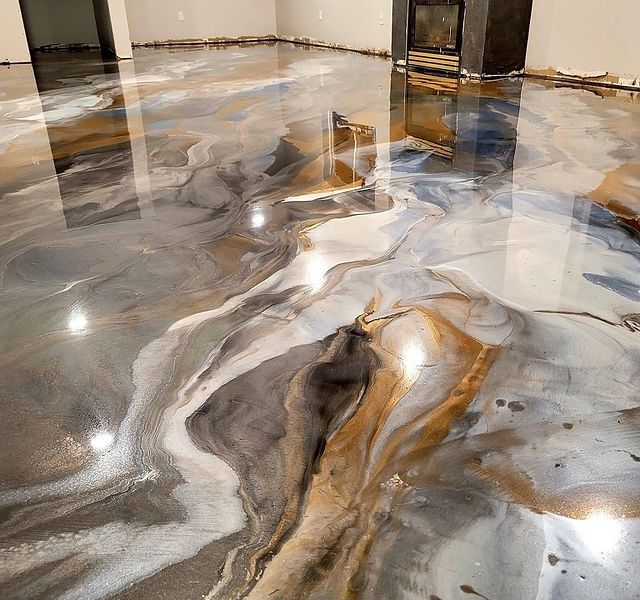
Introduction
Epoxy flooring is gaining huge popularity in modern interior design. You must have seen seamless, glossy floors all over Pinterest and Instagram and wondered—can I get this in my home too?
In this blog, we’ll answer all your questions: What is epoxy flooring? What are its types, process, cost, benefits, and drawbacks? And most importantly—what mistakes should you avoid?
What is Epoxy Flooring?
Epoxy flooring is a resin-based coating applied over concrete, stone, or even tile surfaces. It creates a seamless, smooth, and highly durable surface. Available in glossy, matte, and custom-designed finishes, epoxy floors are a modern alternative to tiles, marble, or wooden flooring.
Types of Epoxy Flooring
There are three main types you should know:
1. Self-Leveling Epoxy
Common in commercial and industrial areas.
Strong, anti-skid, and durable.
Comes in plain colors only (no design options).
Not typically used in homes.
2. Metallic Epoxy
Perfect for residential use.
Offers stunning abstract designs.
Requires highly skilled labor for a smooth, artistic finish.
Best for living rooms, bedrooms, and stylish interiors.
3. 3D Epoxy
Ideal for kids’ rooms, bathrooms, or themed areas.
Involves printing a design on PVC, placing it on the floor, then sealing with transparent epoxy.
More expensive due to the detailing and printing involved.
Process of Epoxy Flooring Installation
Here’s how epoxy flooring is done:
Surface Preparation:
Ensure the base floor is level, crack-free, and dust-free.Primer Coat:
A bonding layer is applied to enhance epoxy adhesion.Epoxy Application:
Based on design—metallic or 3D—the mixture is poured and manually designed.Final Layer (for 3D Epoxy):
A clear, transparent coat is applied over the printed design for durability and shine.
Recommended Thickness: 3mm for homes.
Epoxy Flooring Cost in India (Per Sq. Ft.)
| Type | Cost Range (Per Sq. Ft.) |
|---|---|
| Metallic | ₹250 – ₹450 |
| 3D Epoxy | ₹400 – ₹450 |
| Self-Leveling | ₹100 – ₹200 (Industrial) |
Note: Costs include labor + material. Designs, base floor condition, and location can affect pricing.
Advantages of Epoxy Flooring
Seamless Look: No joints or grout lines like tiles or marble.
Highly Customizable: Any design you imagine can be created.
Anti-Skid Surface: Great for kids and elderly rooms.
Waterproof: Suitable for bathrooms, kitchens, and basements.
Modern Aesthetic: Gives your home a luxurious and trendy look.
Disadvantages of Epoxy Flooring
Expensive: Can cost double that of tiles.
Difficult to Repair: Scratches or cracks are hard to patch seamlessly.
Prone to Scratches: Especially if heavy furniture is dragged.
UV Damage: Prolonged exposure to sunlight may cause yellowing.
Common Mistakes to Avoid
Avoid in Heavy-Furniture Areas:
Frequent furniture movement can cause visible scratches.No Direct Sunlight:
Don’t use epoxy where direct sunlight hits the floor—like balconies or sunlit living rooms.Use Protective Pads:
Always place pads under chairs, sofas, and beds.Periodic Maintenance:
Apply a protective top coat every few years to extend life.
Final Thoughts
Epoxy flooring is a stunning and modern option for Indian homes, especially in areas where visual appeal and durability matter. But it’s important to choose the right type, contractor, and use it wisely.
If you’re planning to get epoxy flooring or want a complete design consultation for your home, click here to talk to our expert designers.
Have questions? Drop them in the comments, and our team will reply within 20–25 minutes!
